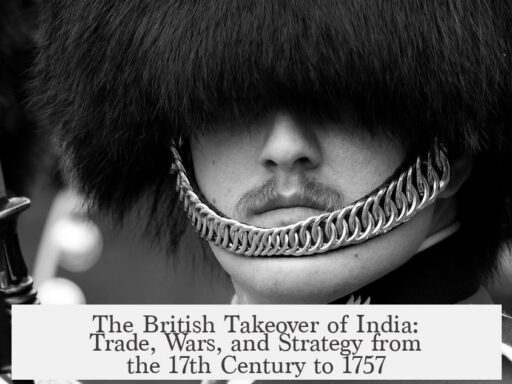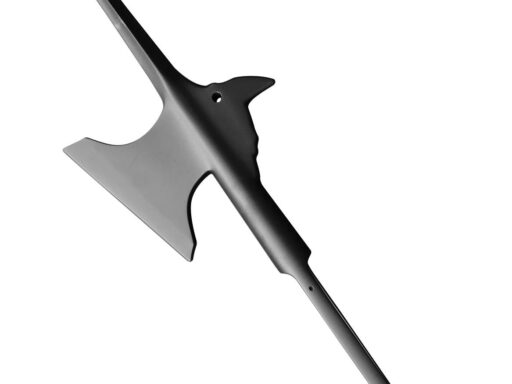The Owl Men, or Tlatlacateculo, in Mesoamerican battles performed spiritual and magical functions deeply rooted in Nahua religion. They combined prayer, totemic symbols, knowledge of plants and animals, and dream manipulation to influence warfare outcomes. Their magic tied into beliefs about naguals, animal-spirits linked to individuals, enabling them to harm or protect enemies psychically, often during dreams. This practice was part of a wider religious system where owls were sacred animal-omens connected to powerful deities like Mictlantecuhtli and Tezcatlipoca. The Owl Men’s magic aimed to affect physical and spiritual realms simultaneously, embodying the critical role of religion and sorcery in Aztec warfare, including their deployment against Spanish forces led by Hernán Cortés.
The Tlatlacateculo, translated as horned owl-men, functioned as sorcerers or mystics who wove spiritual power into battle strategies. Their work involved invoking supernatural forces to harm enemies. They could use totems as focal points for prayers or rituals. Additionally, the manipulation of dream worlds played a key role. Central to this was the concept of the nagual. Every individual had a nagual, an animal spirit analogue existing in dreams. When witchcraft targeted the nagual, the linked person experienced real harm or healing. This dream-based psychic warfare could cause sickness, insomnia, or psychological distress. Thus, Owl Men introduced an element of mental conflict to physical combat.
Their role extended beyond personal confrontations to influencing broad military outcomes. Cuauhtemoc, the last Aztec ruler, famously dispatched the Owl Men against Cortés’s Spanish allies. He equipped a warrior named Tlapaltecatl Opochtzin in a quetzal-owl costume inherited from Ahuitzotl, a past ruler. This attire combined symbolic feathers and owl imagery to invoke divine power. The goal was twofold: to intimidate enemies through the fearsome appearance and to gauge divine approval for continuing the fight. Success in battle under this guise signaled the gods favored the war effort, while failure suggested withdrawal.
| Element | Function | Religious Ties |
|---|---|---|
| Prayer and Totems | Focus spiritual energy on enemy | Appeased and communicated with deities |
| Dream Manipulation (Nagual) | Psychic harm or healing via linked animal spirits | Based on nagual belief about spirit linkage |
| Quetzal-Owl Costume | Intimidate enemies, test divine will | Invoking Ahuitzotl and gods’ favor |
Owls occupied a complex spiritual role in Nahua belief. They were sacred intermediaries between the natural and supernatural worlds. Two main owl types existed: tecolotl and chiquatli. The tecolotl’s call was interpreted as “harm people, harm people,” directly linking owls to death and misfortune. The chiquatli was associated with Mictlantecuhtli, god of the underworld, signifying death and the capture of human souls. Thus, owls symbolized both protective and destructive forces.
Tezcatlipoca, a central god linked with night, sorcery, disease, and fate, was closely connected to practices of witchcraft and magic at night. The Owl Men operated under this divine context, believed to channel Tezcatlipoca’s powers. Their sorcery was neither purely malevolent nor benevolent but part of the cosmic balance of order and chaos critical to Nahua cosmology. Like other omens, owls demanded ritual interpretation and reciprocity to maintain harmony between humans and gods.
The Owl Men’s sorcery influenced Mesoamerican warfare on multiple levels. Physically, their magic boosted morale or instilled fear by symbolic costumes and arcane rites. Psychologically, targeting enemy minds through dreams could degrade combat readiness. Spiritually, they manifested the ongoing battle between order and disorder, embodying religious imperatives that warfare must be sanctioned and meaningful in divine terms.
This integration of military actions with complex religious symbolism reveals how Nahua warfare was not just a physical struggle but a sacred endeavor. The Owl Men exemplified the fusion of magic, mythology, and combat strategy, demonstrating that Aztec battles were fought with weapons and spirits together.
- The Owl Men used prayers, totems, and knowledge of plants and animals for spiritual attacks.
- They utilized the nagual concept to harm enemies via linked animal spirits in the dream world.
- Cuauhtemoc deployed Owl Men against Cortés’s allies, using symbolic quetzal-owl costumes.
- Owls were sacred omens connected to death gods like Mictlantecuhtli and sorcery gods like Tezcatlipoca.
- Their magic represented the cosmic balance of order and chaos within Nahua religious beliefs.
- Owl Men’s role blended psychological warfare, religious ritual, and physical combat.
Unmasking the Mystics: How Owl Men Cast Spells in Mesoamerican Battles and Their Religious Roots
Battles in Mesoamerica weren’t mere clashes of swords and spears—they included an eerie, mystical warfare element performed by the legendary “Owl Men,” or Tlatlacateculo. These mystics weren’t just perched on the sidelines with owl feathers; they wove dark magic that tied deeply into Aztec religion and mythology. But what exactly did these enigmatic figures do? And how did their powers connect with the gods?
Let’s embark on a journey through history, myth, and battlefield strategies to understand how these owl sorcerers influenced warfare, including their famous deployment against Hernán Cortés’ forces.
The Singing Shadows: Who Were the Owl Men?
The Tlatlacateculo—or “Owl Men”—were believed to be sorcerers who specialized in dream-based magic and spiritual warfare. Using a cocktail of prayer, sacred totems, and deep knowledge of plants and animals, they practiced spells that could heal or harm others, often targeting enemies in their dream states.
One of their signature methods involved the concept of the nagual—an animal spirit linked to a person that exists in the dream realm. Imagine your spirit-animal sidekick living in a Shadow World parallel to yours. If a witch harmed your nagual in a dream, your real body could suffer real effects: illness, sleeplessness, even psychological disturbances.
So yes, the Owl Men weren’t just spooky shamans; some scholars think they might have pioneered a form of psychological warfare. Picture an enemy soldier plagued by disturbing dreams, convinced that mysterious forces attack him while he sleeps. Morale-breaking spells in the dead of night? That’s warfare on a new level.
The Owl Men in Action: How They Faced Cortés
When the Spanish conquistador Hernán Cortés advanced into Aztec lands, the Aztec emperor Cuauhtemoc pulled out an unusual tactical move. He sent the Owl Men against Spanish allies, hoping their dark magic might tip the scales.
According to historical accounts, Cuauhtemoc outfitted a fierce warrior named Tlapaltecatl Opochtzin in a spectacular quetzal-owl costume—a striking blend of sacred feathers symbolizing power and ominous night creatures. This costume originally belonged to the warrior Ahuitzotl, a legendary Aztec ruler.
Wearing this costume wasn’t just about looking intimidating. It was a spiritual test: if the warrior had success in battle, it meant the gods approved the fight’s continuation. The owl symbolized an almost supernatural endorsement of war and a nod to divine will. Seeing the owl-man on the battlefield was meant to scare enemies and reassure Aztec warriors that the gods were on their side.
Religion Meets Magic: The Divine Origins of Owl Men
The mystical powers of the Owl Men sprang from Aztec mythology and religion, deeply rooted in the worship and fear of several powerful deities.
- Mictlantecuhtli, lord of the underworld Mictlan, is linked to owls as creatures of death and the afterlife.
- Tezcatlipoca, the god associated with sorcery, night, and fate, represented the chaotic forces of disease and plague, blending magic as a natural cosmic power.
Owl Men, known as tlacatecolotl (literally “horned owl-man”), were considered sorcerers or demons who could bring misfortune under cover of night. Their magic wasn’t just chaos; it reflected the ancient belief in order versus chaos, good versus evil—echoes of dualities found across many religions.
Their spells were also connected to tetzahuitl—living omens or messages from the sacred world. Owls were more than birds; they acted as divine messengers whose calls foretold death or disaster. For instance, the owl’s haunting cry could be interpreted as “Harm people, harm people,” a grim portent of night-time hunts by these sorcerers.
Shapeshifting and the Dream Realm: A Double Life
The Owl Men were not just sorcerers; they were shapeshifters too. The concept of the nahualli was central to their powers. A nahualli could change into animals and traverse the dream world, influencing fate from beyond the physical plane.
This dream magic was more than superstition. It created a psychological battlefield as real as the fight with swords. A warrior plagued by disrupted sleep or vivid nightmares might falter in dawn’s battle—giving the Owl Men’s magic a strategic edge.
What Can Modern Readers Learn from this?
The Owl Men’s legacy reveals how deeply intertwined war, religion, and psychology were in ancient Mesoamerica. Their magic wasn’t stagecraft but part of an entire worldview where human and divine forces clashed simultaneously.
Today, this reminds us how much culture and belief shape conflict. War isn’t just steel and blood but spirit and story. The Owl Men show that even in brutal battles, an invisible war raged in the minds and dreams of those who fought.
Next time you hear about mystical warriors or enchanted battles, think of the Tlatlacateculo, cloaked in quetzal feathers and owl eyes, invoking gods and omens in the pitch-black night. Their tales are a potent reminder: war in Mesoamerica involved more than muscle—it was a cosmic dance between order, chaos, life, and death.
“Let one of the most valiant among us come and don the arms and insignia… Let our enemies see this costume; it could be that they will be frightened by seeing it.” – Cuauhtemoc
How do you think psychological strategies like dream magic compare to modern warfare tactics? Could spiritual beliefs be an overlooked battlefield? The Owl Men definitely believed so.


